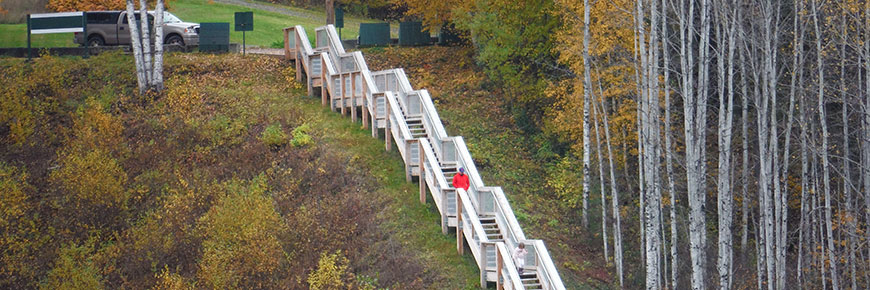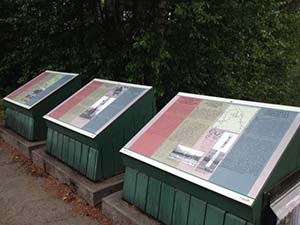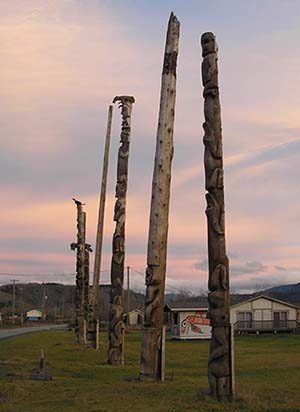
Things to do
Gitwangak Battle Hill National Historic Site
Self-guiding trail

When you arrive at the site, you'll find parking at a viewpoint overlooking Battle Hill. Three interpretive panels in the parking lot tell the story of the site and entice visitors to learn more by walking the short self-guiding trail.
Start by walking down a wooden staircase into the river valley. You'll traverse the base of the hill, stopping to read two more interpretive panels, then ascend another set of stairs leading to the top of this former hill fortress. Benches placed at the summit offer excellent views and a rest after your short exertion. The final two panels reveal more about 'Nekt and Gitwangak history. Return by the same route.
Walking the trail at a leisurely pace and reading all the panels will take about half an hour (round trip).
Please stay on the trail. Parks Canada has been trying to control loss of vegetation and resulting erosion, which has occurred because of people taking short cuts up or down the hill.
Totem poles of Gitwangak National Historic Site

To learn more about this First Nation's history, visit Totem poles of Gitwangak National Historic Site, located at Gitwangak Village, 6 km south of Battle Hill, just before the Skeena River bridge.
The totems are visible from Highway 37. There is ample space for large RVs in the village and no backing up is needed.
The poles are owned and managed by the Gitwangak Band.
Following their move from Gitwangak Battle Hill to this village in about 1835, members of the Frog-Raven (Ganada), Eagle (Laxskik) and Wolf (Laxgibu) clans commemorated their history in a series of carved house poles. The Fireweed (Gisgast) clan joined the village later.
Totem poles continued to be erected at potlatches in this village in spite of federal anti-potlatch laws, from 1874 to 1954.
Although the remaining poles have been moved several times to protect them from floods, they represent the oldest collection to be found in their original village context anywhere in British Columbia.
Related links
- Date modified :